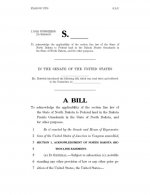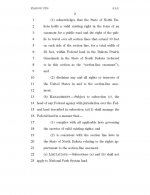brocksw
WKR
ND folks:
North Dakota Senator John Hoeven recently introduced legislation that would force the USFS to hand over all section lines in the Grasslands(Badlands) to the state. The states intent is to build roads on those section lines. This would result in the loss of all Roadless areas, Non-Motorized Areas, and areas Suitable for Wilderness. literally taking away already difficult to find back country experiences. That gets a BIG NO from us! Click the link below to take action and let him know you DO NOT support his actions and want him to end spending millions of tax payer dollars in federal court only to develop the best public land in the state.
Take it one step further and call his office to voice your opposition! (202) 224-2551
It's a 2 minute call, you can't afford not to do both!

 www.backcountryhunters.org
www.backcountryhunters.org
Copy of the legislation:
North Dakota Senator John Hoeven recently introduced legislation that would force the USFS to hand over all section lines in the Grasslands(Badlands) to the state. The states intent is to build roads on those section lines. This would result in the loss of all Roadless areas, Non-Motorized Areas, and areas Suitable for Wilderness. literally taking away already difficult to find back country experiences. That gets a BIG NO from us! Click the link below to take action and let him know you DO NOT support his actions and want him to end spending millions of tax payer dollars in federal court only to develop the best public land in the state.
Take it one step further and call his office to voice your opposition! (202) 224-2551
It's a 2 minute call, you can't afford not to do both!

Take Action
Backcountry Hunters & Anglers is the voice for our wild public lands, waters and wildlife.
Copy of the legislation:


